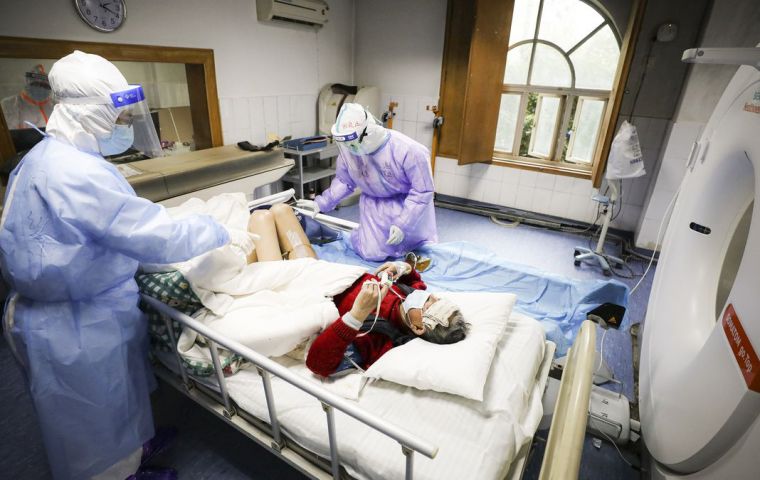MercoPress. South Atlantic News Agency
WHO scientists say key data missing to understand how the pandemic started
 “It is always difficult to investigate the origin of a new pathogen when you don't have the initial case,” Venter explained
“It is always difficult to investigate the origin of a new pathogen when you don't have the initial case,” Venter explained World Health Organization (WHO) specialists said Thursday that they still lacked key data in order to reach a conclusion on how the COVID-19 pandemic started and eventually spread worldwide.
The experts also pointed out further studies were needed on people, animals, and on Chinese environment. The panel WHO had commissioned to establish the origin of this and other new pathogens has said in a preliminary report that, based on epidemiological and genetic information, COVID-19 would be of animal origin.
The closest genetic viruses have so far been identified in bats in China and Laos, in 2013 and 2020, respectively, the experts said. Another international group of scientists who visited China last year concurred. Still, researchers are yet to determine the progenitor virus, the natural reservoir that acted as an intermediary, and the event that caused the jump to humans, the document showed. Subsequent reports are due as work on these issues advances.
Some countries, such as the United States, have criticized China's lack of transparency throughout the pandemic and its delay in sharing information essential to understanding how an infectious outbreak of a new virus became a pandemic.
Although COVID-19 has officially caused 6 million deaths globally, the WHO recently issued a report indicating that deaths could be as many as 15 million, including people who were infected but not tested and thus not considered confirmed cases, in addition to people who could not be treated for other illnesses due to confinement measures or to the collapse in local healthcare systems.
It remains unknown to the panel how the SARS CoV-2 virus entered the Wuhan market in China, from where it is believed to have spread. The scientific group also said environmental samples collected from stalls and drains in January 2020 that tested positive in areas where live animals were sold should be examined.
The scientists have also pointed out that there was no new data pointing to the possibility of the virus stemming from a laboratory. This lead and others should remain open, the panel insisted.
“It is always difficult to investigate the origin of a new pathogen when you don't have the initial case, but we have some clues. We now know that there are different species that can be infected, which we didn't know at first,” said panel chair Marietjie Venter.
Her vice-chair, Jean-Claude Manuguerra, recalled that “it took years to understand how HIV started and how it passed into humans, but if we persist we will find answers about the origin” of COVID-19.




Top Comments
Disclaimer & comment rulesCommenting for this story is now closed.
If you have a Facebook account, become a fan and comment on our Facebook Page!